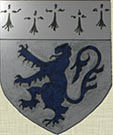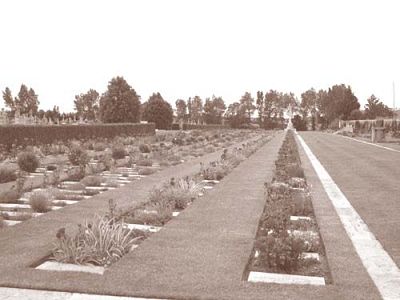 |
SKELTON - IN - CLEVELAND
IN HISTORY
|
 |
"WE WILL REMEMBER THEM"
71004 Acting Bombardier JAMES [JIM] HORACE YOUNG DAY.
71st Bty. 36th Bde, Royal Field Artillery.
Died of Wounds, aged 19, on the 31st October 1914.
Born at Skelton in Cleveland.
Son of Sarah Ann Day, of 40, Bishophill, Senior, York, and the late William Day.
|

Boulogne Eastern Cemetery.
|


|

First Battle of Ypres.
|
FAMILY:-
1901. Jim, aged 5 was living at 33 Boosbeck Rd and had been born in Skelton.
His father, William, aged 51, also born in Skelton was an Ironstone miner.
His mother Sarah, aged 51, came from Wilton, N Yorks. She had had 11 children and 10 were still living.
He had 3 brothers, William 17, who was a horsedriver in the mines; and John, age 12, who was a grocer's lad.
The eldest brother, Walter aged 24 in 1901, died in on the 23rd May 1919 having served with the Royal Garrison Artillery. [see memorial on previous page].
His sisters were Mabel 14, Elsie 9, Kate 7 and Miriam 2.
1911 Census. The family are still at 33 Boosbeck Rd. James is working underground in the Ironstone Mines as a Horse Driver.
His father, age 61, is still working as an Ironstone miner, but had died by the time the family put the In Memoriam notice above in the local newspaper.
By the end of the War his mother had moved to York.
ATTESTATION
Jim's attestation paper below shows he enlisted at Newcastle, age 19 yrs 1 mth, on the 2nd October 1912 in the Regular Army.
No doubt following the example of his elder brother and like him opting for the Royal Artillery.
The form shows that he had already joined the local 4th Battalion Territorials.
WAR SITUATION:-
The 36th Bde of the Royal Field Artillery were attached to the 14th division.
The Division came into existence of Army Order No.324, issued on 21st August 1914, authorising the formation of the six new Divisions of K1.
It was formed of volunteers, under the care of the War Office.
After the Germans were stopped at the Battle of the Marne both sides dug in and there was a "race to the sea" going North as each tried to outflank the other.
This race ended in bloody conflict at Ypres in October, to prevent the Germans gaining control of the Channel ports.
Jim Day must have been badly wounded at some time during this action.
|
 |
MEMORIAL
Boulogne, where Jim is buried, was one of the three base ports most extensively used by the Commonwealth armies on the Western Front
throughout the First World War.
Boulogne and Wimereux formed one of the chief hospital areas.
Until June 1918, the dead from the hospitals at Boulogne itself were buried in the Cimetiere de L'Est, one of the town cemeteries, the
Commonwealth graves forming a long, narrow strip along the right hand edge of the cemetery.
|
|